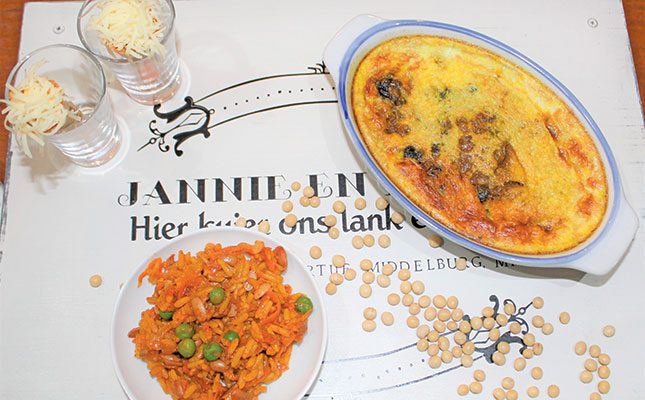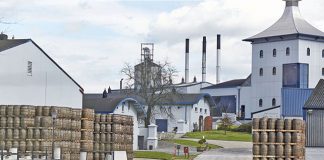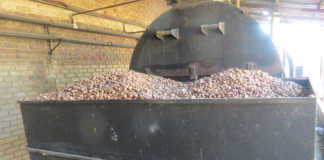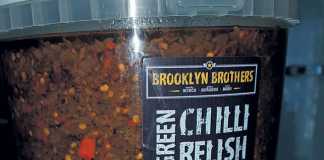
Photo: Lindi Botha
Soya mince, hamburger patties and sausages – this is where it all went wrong for soya beans for human consumption in the 1960s.
Since then, mention of the ingredient on product labels has quickly seen hands withdrawn from products on supermarket shelves and in fridges as memories of this meat replacement have set an unsavoury precedent.
The negative perception of soya beans is the biggest hurdle the Cloete family of Oja Farms have faced in gaining market traction with their novel soya bean-based products.
Since 2017, Oja Farms has produced a range of products including dry beans, snack bars and beans covered in various coatings like chocolate and yoghurt.
Brothers Martin and Jannie are the fourth generation on the farm, which has seen its land split up over the years between family members. When Jannie returned to the farm after his father’s death in 2017, he realised that he would need to do more than just farm to make the 300ha property profitable.
He saw an opportunity in soya beans to turn it into a product that would be more widely adopted into human diets.
“Meat has 43% protein and contains all nine amino acids that make it a complete protein. There are only two plants that can match that: quinoa and soya beans.
“Dry beans have a protein content of between 4% and 24%, and peanuts 25%. Soya beans have 36% to 45% protein depending on the quality, but it is a complete protein, which the other beans are not. It is therefore an ideal food to reduce world hunger and provide more affordable nutrition,” says Jannie.
South Africa produces nearly two million tons of soya bean annually, of which the majority is used for animal feed, and only around 3% for human consumption. Jannie knew that soya’s taste was a barrier in gaining greater acceptance, so this was the first hurdle he needed to overcome.
During his research he came across a crucial moment in history when soya beans committed their first mistake.
“The Chinese have been eating soya beans in various forms for over 2 700 years, three meals a day. It was only during the 1800s that the bean made it to Western civilisations, when maritime traffic between the East and West exposed the world to new foods and crops. Americans started planting soya beans, but they were bred for yield and not for flavour.
“Then a pivotal moment arrived after the Second World War, when there was a big shortage of plant oil, and Americans turned to soya beans. Containing 18% oil, the beans were crushed, the hull and oil removed, and the remaining cake used to make products for both animals and people.”
The second mistake occurred in the 1960s, when meat prices started rising and food producers sought cheaper alternatives.
They took the soya bean flakes and powders produced from the cake and put it through an extruder that blew steam into it to make textured vegetable protein (TVP), like soya mince and chunks.
“They tried to make it taste like meat, which it never will,” Jannie explains.
“And so today this is the biggest challenge we face. We have figured out how to make soya beans tasty, but they are associated with poverty.”
This was because, when the TVP products were first launched, they were positioned as a cheaper alternative to meat.
“If only the early marketers had advertised it as a bean product, instead of trying to pass it off as meat, soya would have the same status as any other dry bean, and be equally accepted,” he says.
Putting back the flavour
One of the obstacles in producing soya bean products is that soya contains antitrypsin protein, which the human stomach cannot digest unless it is heat-processed at 150°C.
Roasting beans at such a high heat renders them dark, bitter and unpalatable.
During Jannie’s research he came across literature that spoke of the soya bean as the ‘Cinderella’ of grains, and that with a bit of love and attention, it could be the princess. Key was the processing and roasting methods.
“When traditional soya bean products are made, the bean is crushed, and the hull removed. During this process, three molecules within the bean react to create an unpleasant flavour. By processing the bean whole, these molecules instead produce a pleasant, nutty flavour. You can break the bean after it has been processed and it won’t change the flavour, but not before,” he explains.
He turned to a microwave oven to solve the problem caused by roasting the beans. Without red hot elements, the microwave could achieve the required heat without burning the nut.
Not being able to find machinery that could handle the load locally, he looked to China to build him the required equipment.
After six months of fine-tuning the recipe, Jannie came up with two main products: dry soya beans that could be cooked and consumed like any other dry bean, and soya ‘nuts’, which are first soaked in water and then roasted to render them crunchy, with a texture between a nut and a Rice Krispie.
The soya nuts are flavoured with a range of salty seasonings and sold as a popcorn-like snack. The nuts are also placed in muesli and snack bars and coated in chocolate.
Riette Strydom, Jannie’s wife, has developed a full range of recipes using the dry soya beans. Sold with a flavoured stock, the beans must be soaked for 20 minutes and then cooked for a further 20 minutes, which is far shorter than the 90-minute cooking time for kidney beans.
“Yet, we have found that people find even this process too laborious, and instead want a quick solution in a can,” laments Riette.
Changing perceptions
Riette and Jannie have traversed the country to get market buy-in for their products. They claim to be the only producers of this kind of soya bean product in the world, which makes the task of educating consumers particularly large for such a small enterprise.
With its range of nutrients, it ticks all the boxes for a superfood, containing at least 36% protein, 17% fibre and 18% oil, of which 12% is unsaturated fat. It is gluten and cholesterol free, and research has shown that soya helps fight certain cancers.
Yet, cooking demonstrations at women’s days and farmers’ days, at retirement villages and stokvels received little response, leaving the couple baffled: “They love the cooked food I make for them, but they don’t want to bother with dry beans,” says Riette.
She laughs and says that often, trickery is required to get consumers to try the product in the first place.
“The first thing people tell me when I come with our products is that they don’t eat soya. So instead I call it a bean soup or casserole. People are perfectly happy to eat food containing beans – just not soya. One thing that never changes is people’s reaction after they taste it – they love it and can’t get enough. They can’t believe that soya beans can taste so good.”
Besides the slight nutty flavour, the cooked dry beans are rather bland. This presents as a boon rather than a curse because soya can be used in nearly any dish and will take on the flavour of the other ingredients.
Riette demonstrates with a caramelised onion and soya bean soup, which when blended to creamy perfection, is a salty-sweet, low-calorie winter warmer. Her chilli con carne, which replaces the kidney beans and mince with soya beans, is a spicy delight without any hint of bean flavour.
She even includes the soya nuts in meringues served for dessert, providing a high-protein, nutty sweet.
Jannie explains that through marketing they are trying to place soya beans back into the bean category and remove soya from the association with being a bad-tasting meat replacement.
“Still, we find that our soya nuts started selling far quicker when we removed the word ‘soya’ from the front of the packaging and instead called the product ‘crunchy nuts’.”
Getting certification from the vegan industry to gain greater presence in this market has also failed.
“Yes, there is a greater need for plant-based protein alternatives, but vegans don’t want produce from farms where animals have grazed the land. We have been practising no-till for 12 years, and allowing the cattle to graze the fields after harvest is a crucial element.
“We also found the health food market to be unwelcoming because the soya beans are GMOs. Planting non-GMO is not feasible for us because of the extra pesticides required,” says Jannie.
The other obvious route is to precook the beans and sell them in a can to reach consumers wanting ready-to-eat beans.
“The canning factories don’t want soya going through their facilities, and erecting our own is just not economically feasible on the scale at which we are producing. But I believe that in the long run, selling soya beans in a can will be the best way to get greater uptake,” he says.
For now, the couple are focusing their efforts on feeding schemes and schools since the products offer a nutritious, affordable meal to an audience that is less picky about what they eat.
Markets abroad are also being sought, since Jannie believes them to be more bean-friendly than South Africans.
In the meantime, the Cloetes agree that there is a long road that still needs to be walked to change the negative connotation that soya bean products have.
“But land and resources are becoming scarcer while world populations grow. The world needs more nutrient-dense food and soya beans are it.
“Furthermore, South Africa still has a long way to go to reach the true potential of soya beans, as seen in yields in South America. Our national crop will grow, and we will need new markets.”
Email Riette Strydom at [email protected], or Jannie Cloete at [email protected].












